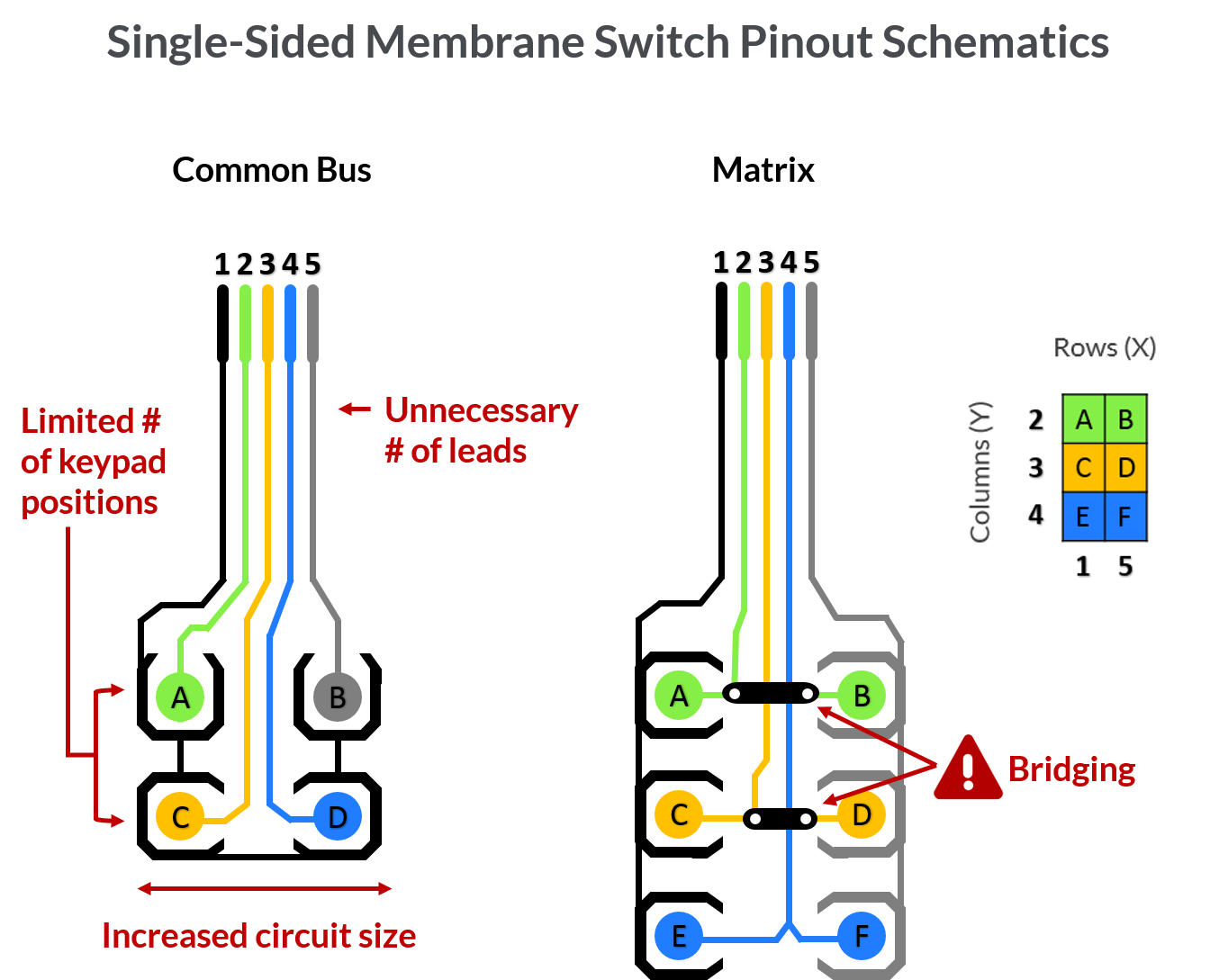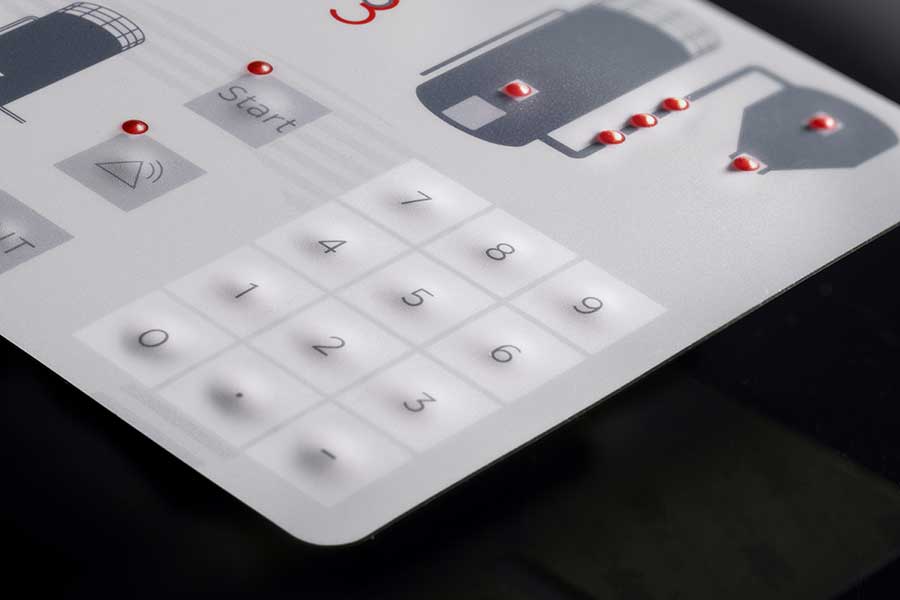Membrane Switches Over Explained: A Comprehensive Guide to Their Benefits
Membrane layer switches stand for a advanced and functional service for creating customer interfaces across a range of markets. Their multilayered design not only makes sure capability via straightforward pressure but also provides considerable advantages, such as durability and customization. As industries increasingly seek reliable and efficient control user interfaces, recognizing the specific advantages and applications of membrane layer switches over comes to be essential. The ins and outs of their style and implementation present unique obstacles that merit closer examination. What factors should be considered to fully take advantage of their capacity in modern applications?
What Are Membrane Switches?

When stress is related to the membrane layer switch, the layers make get in touch with, finishing an electric circuit. This simple system permits a wide variety of applications, from customer electronics to commercial equipment. Membrane layer buttons are frequently designed to be resistant and water resistant to dust and impurities, making them appropriate for settings where sturdiness is crucial.
Furthermore, the adaptability of the materials utilized in membrane layer changes helps with cutting-edge designs that can adapt to numerous shapes and dimensions. This flexibility adds to their appeal in varied areas, including clinical devices, auto controls, and home devices. Generally, membrane switches represent a vital component in contemporary interface modern technology, bridging the gap in between customers and digital systems.
Trick Advantages of Membrane Layer Buttons
Amongst the myriad of individual interface choices available, membrane switches over stand out for their unique mix of benefits. One of the primary advantages is their lightweight and portable style, which permits assimilation right into a variety of tools without adding considerable bulk. This is particularly useful in applications where area is limited.
In addition, membrane switches deal durability and resistance to ecological aspects. They are usually constructed with products that can endure moisture, dirt, and various chemicals, making them ideal for severe conditions. This resilience adds to a much longer lifespan contrasted to traditional mechanical buttons.
One more substantial advantage is the versatility in modification. Membrane buttons can be printed with numerous graphics, shades, and textures, enabling for tailored layouts that meet specific branding or practical needs. This adaptability includes the variety of layers and circuit options, supplying designers with multiple setups.
In addition, the tactile comments given by some membrane changes boosts individual experience, making them a lot more user-friendly to run. The simplicity of cleaning and upkeep better solidifies membrane switches as a functional selection in both customer and commercial applications. Overall, these essential benefits make them a recommended remedy for many designers and producers
Applications in Different Industries
Exactly how do membrane layer buttons find their place throughout varied sectors? Their versatility and functionality make them integral components in sectors ranging from healthcare to customer electronic devices. resource In clinical tools, membrane layer buttons are made use of for their convenience of cleansing and resistance to contamination, making certain health in settings where sterility is crucial.
In the consumer electronic devices sector, these buttons supply smooth, easy to use interfaces that enhance item looks while preserving toughness versus wear and tear. Automotive applications gain from membrane layer switches over also, where they are used in control panels and control board, using reputable performance in challenging problems.
Furthermore, industrial machinery uses membrane layer switches for control board because of their robustness, capacity to stand up to severe environments, and personalized styles that deal with certain operational demands. The food market leverages membrane layer switches for their ease of usage and resistance to spills, guaranteeing operational effectiveness in fast-paced setups.
Eventually, the adaptability of membrane layer switches throughout these diverse applications highlights their important duty in modern-day technology, boosting user communication while meeting industry-specific demands. Their continued evolution assures further combination into emerging areas and innovative products.
Design and Modification Options
The style and modification options offered for membrane layer switches are vital for customizing interfaces to satisfy details user requirements and visual preferences. These switches can be created in numerous shapes, dimensions, and formats, enabling seamless combination right into diverse applications. The versatility in style means that producers can produce one-of-a-kind interfaces that enhance functionality and preserve brand name identification.
Custom textures, colors, and graphics can be applied to the surface of the membrane switch, offering an opportunity for branding and individual interaction. Furthermore, backlighting choices, such as LED lighting, can be integrated to enhance exposure in low-light conditions, therefore enhancing functionality.
Functional elements can also be customized, consisting of responsive responses and actuation pressure, which can be adapted to fit different user interactions. The selection of products, such as polyester or polycarbonate, enables variants in longevity and ecological resistance, accommodating the certain demands of different industries.
Inevitably, the comprehensive design and customization capacities of membrane layer switches allow companies to create visually enticing and straightforward interfaces, ensuring that their items satisfy both visual and practical requirements effectively. Membrane Switches.
Considerations for Implementation
Executing membrane layer switches requires careful factor to consider of numerous elements to ensure why not look here optimum performance and user experience. Elements such as direct exposure to moisture, extreme temperatures, and chemical compounds can dramatically affect the switch's performance and durability.

An additional important aspect is the switch's design and layout. Making sure that the responsive responses and actuation pressure straighten with customer assumptions boosts use. Performing individual screening can supply useful insights into the optimal design.
Additionally, compatibility with electronic parts should be evaluated. The switch's wiring need to straighten with the general system design, making sure trusted signal transmission and decreasing disturbance.
Additionally, production methods and costs need to be examined. The option between custom layouts and typical versions can affect both budget and lead time.
Last but not least, think about repair and maintenance. Membrane layer switches may call for certain cleaning and care her explanation treatments to preserve their appearance and capability with time. By resolving these considerations, organizations can implement membrane layer buttons that meet their functional requirements while supplying a favorable customer experience.

Conclusion
Finally, membrane switches stand for a long lasting and versatile control user interface suitable for a large range of applications throughout multiple sectors. Their compact layout, resistance to environmental variables, and adjustable features improve user experience while meeting details branding requirements. As modern technology remains to advance, the significance of membrane layer switches in contemporary tools stays significant, using both functionality and aesthetic allure. Future developments will likely better expand their applications and efficiency in various atmospheres.
Membrane layer changes stand for a innovative and functional service for producing individual interfaces across a range of markets.Recognizing the basic parts of modern digital interfaces, membrane switches are a type of user interface device that consist of flexible, thin layers of material. Overall, membrane changes represent an essential aspect in contemporary individual interface innovation, bridging the space in between customers and electronic systems.
Amongst the myriad of user interface choices readily available, membrane layer changes stand out for their unique mix of benefits.The design and modification alternatives readily available for membrane switches are critical for tailoring interfaces to fulfill particular customer needs and visual preferences.